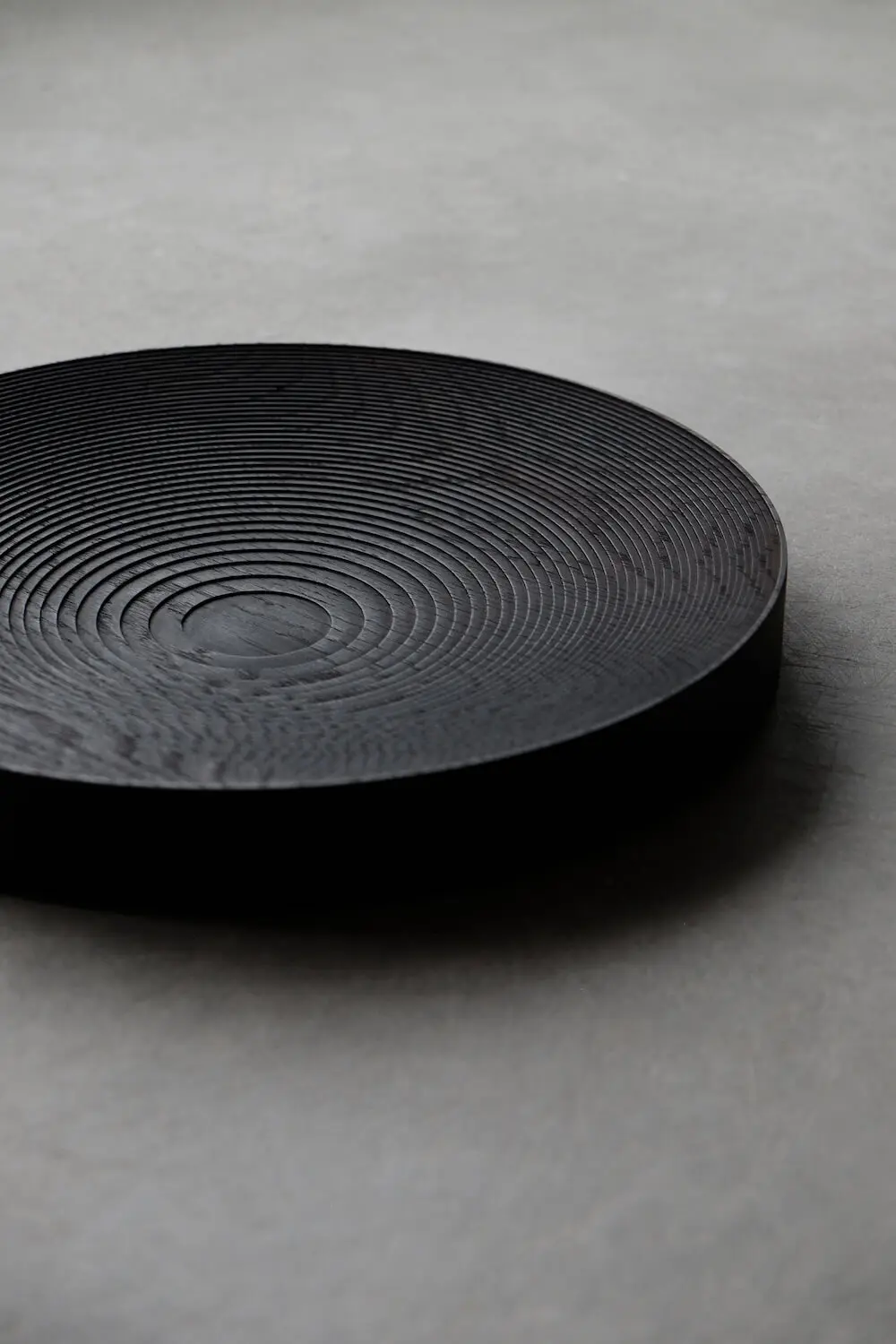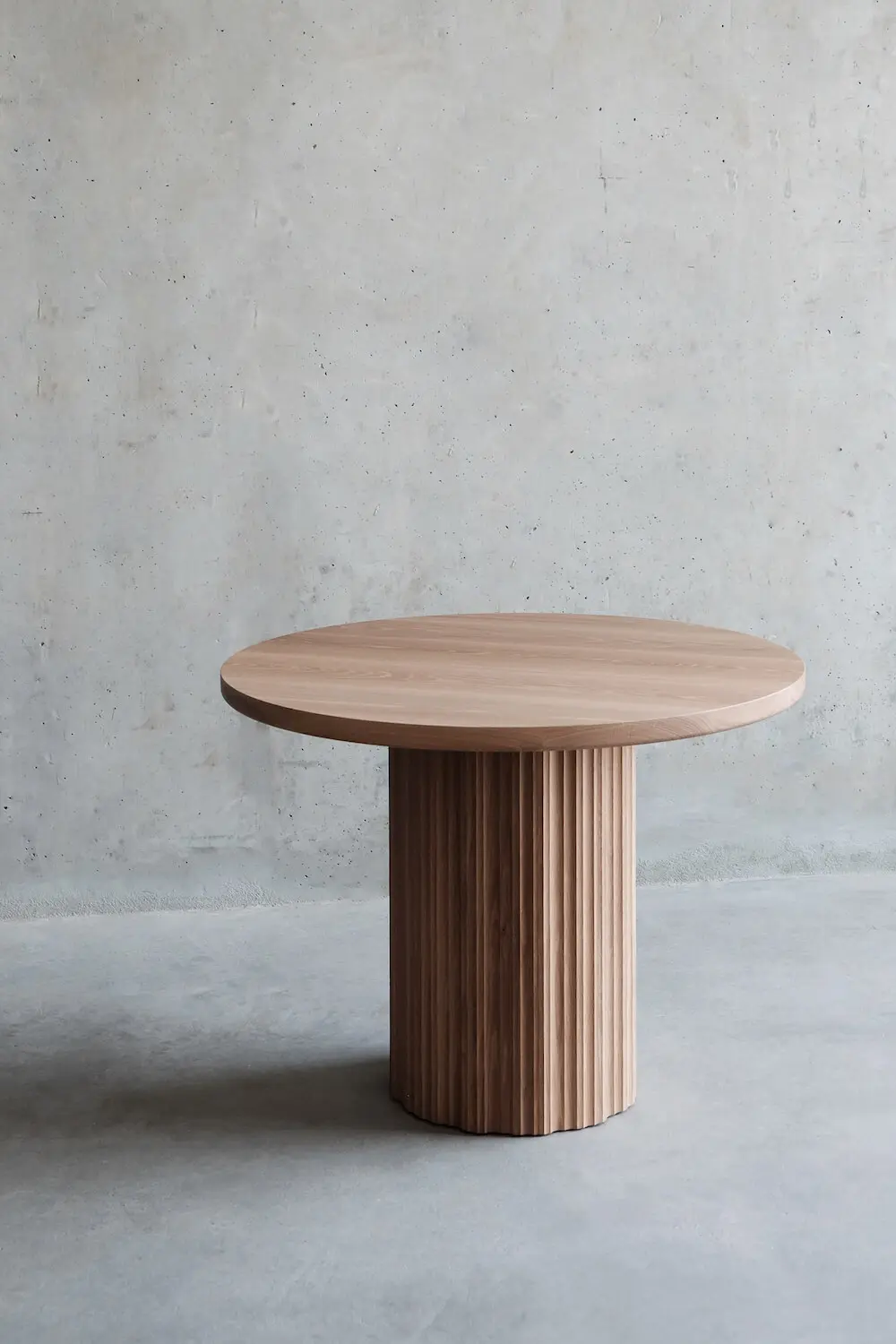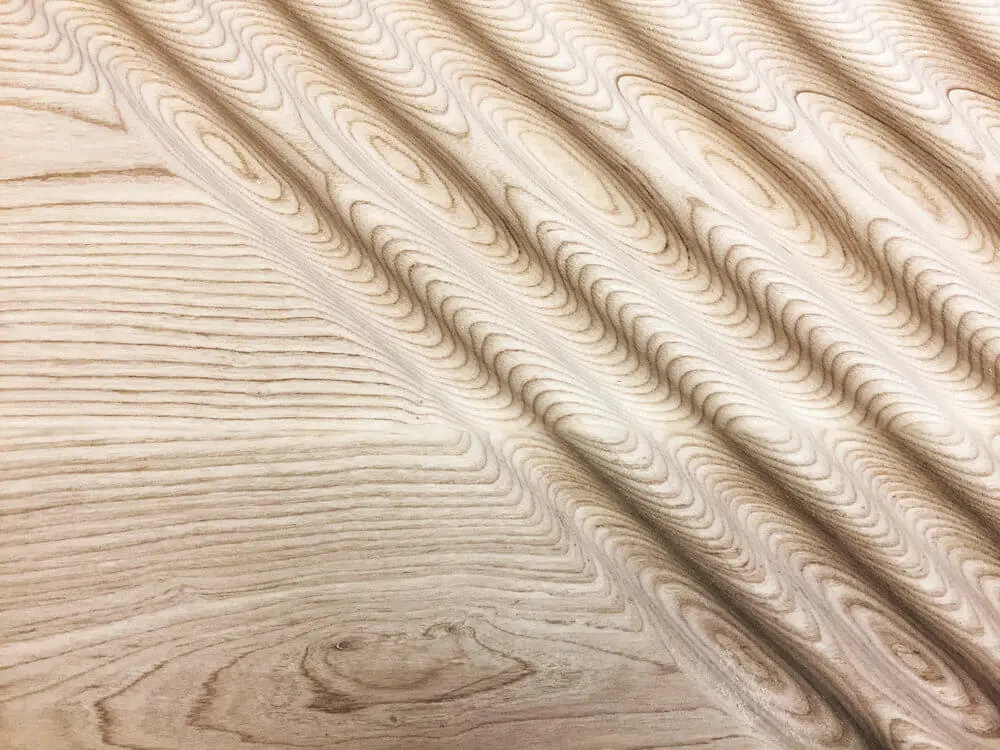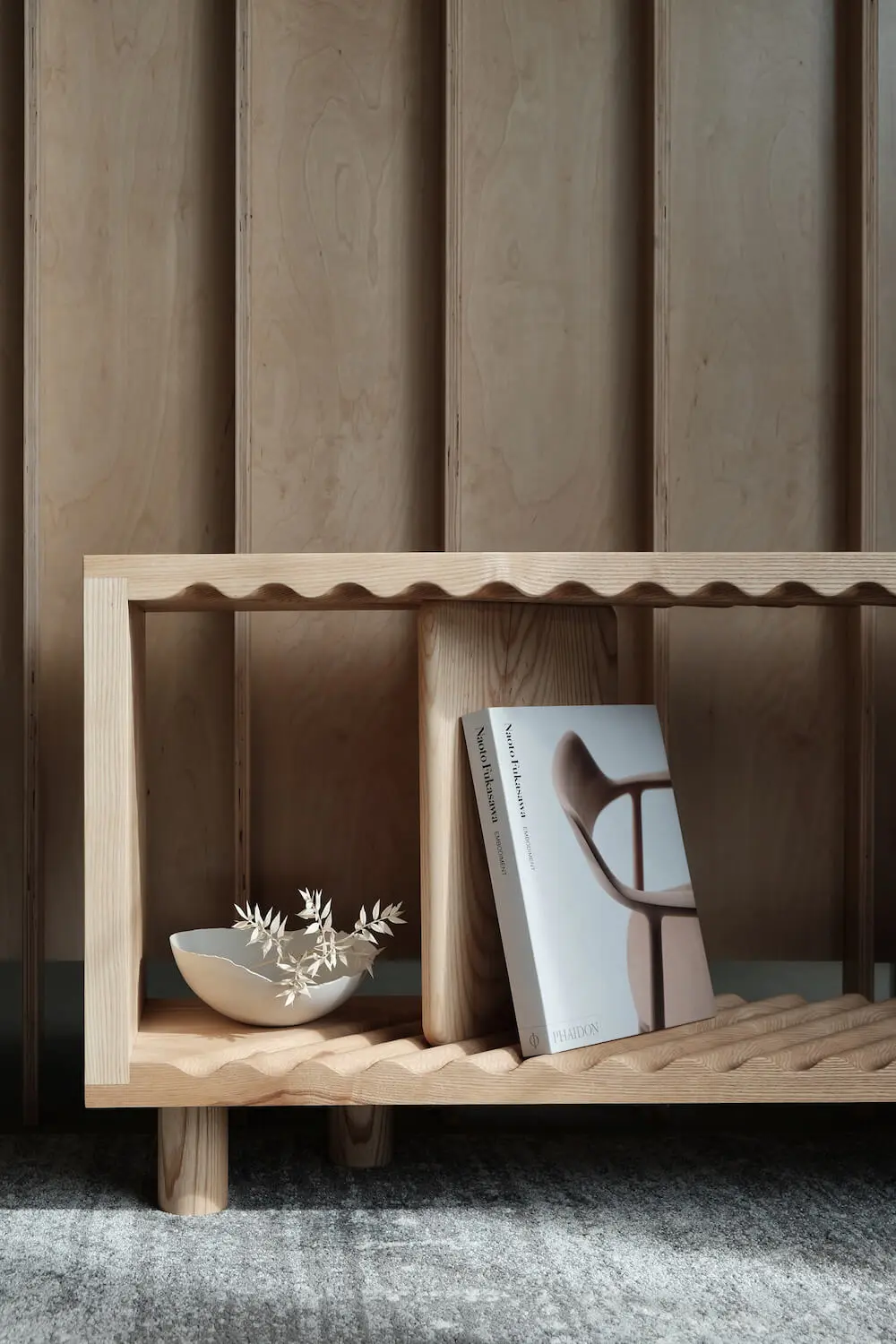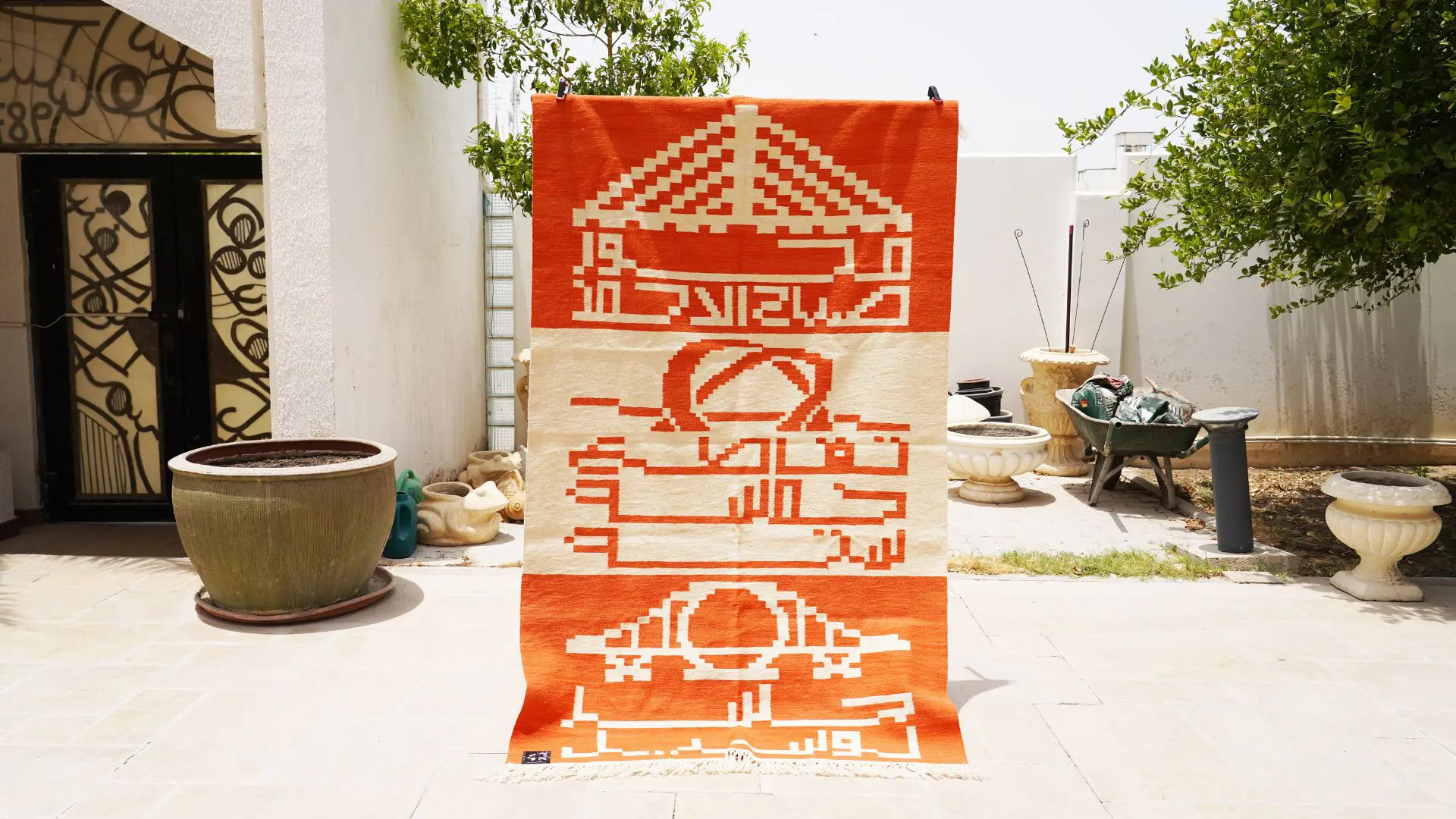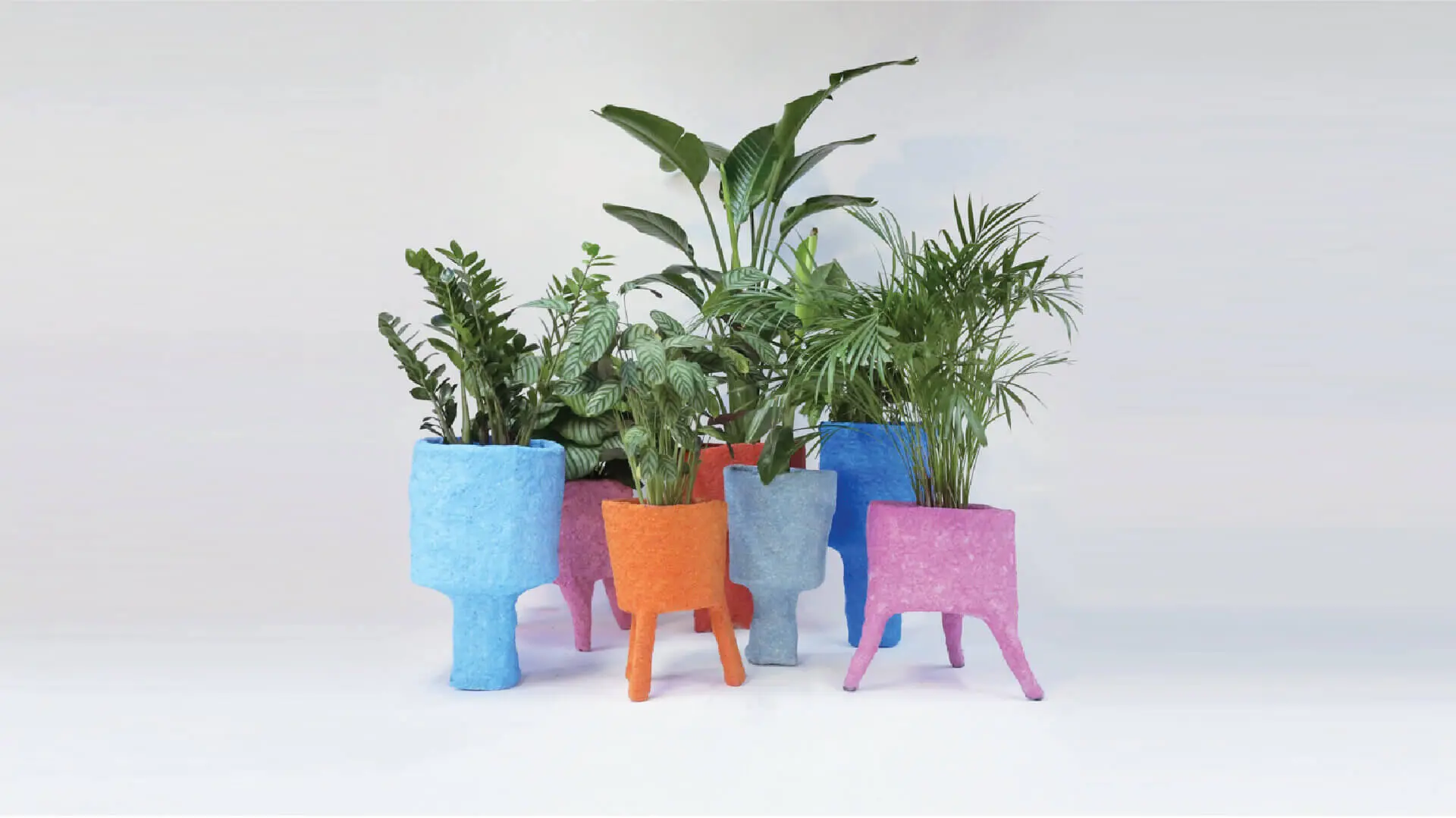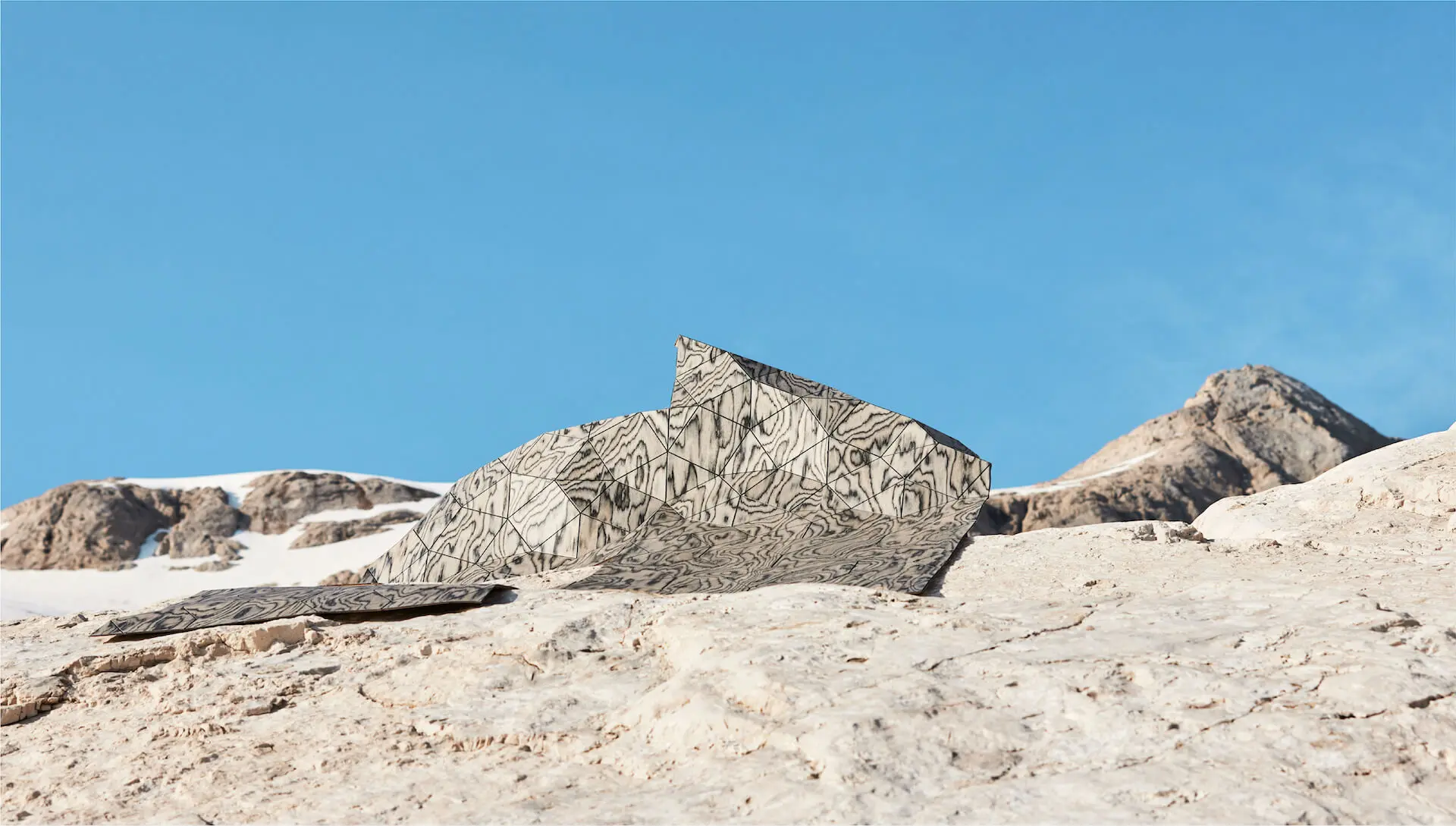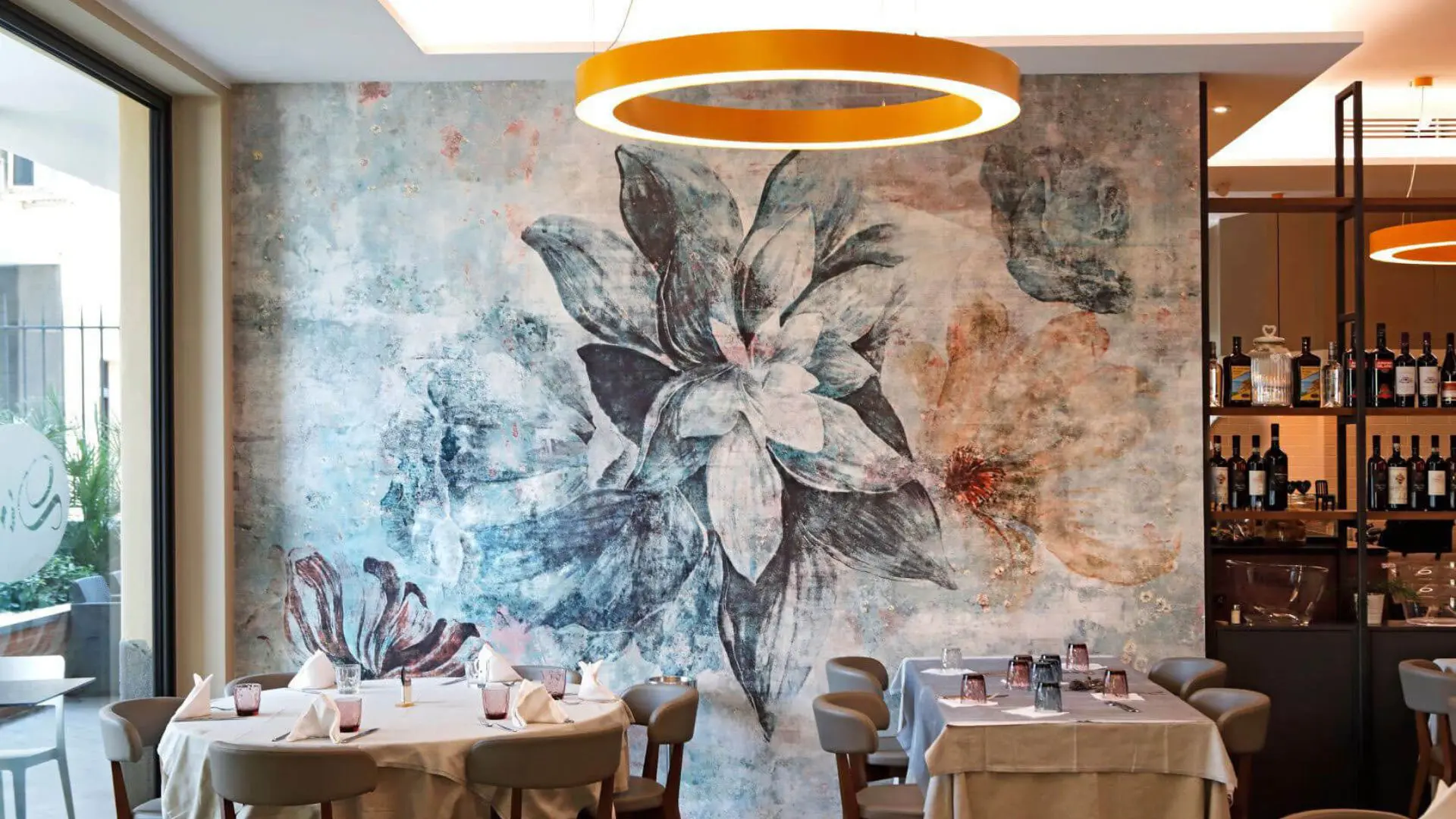Origins’ digital approach to craft transforms wood with “liquid” lines
Experimental design studio Origins combines craftsmanship and digital fabrication to create wooden surfaces with striking effects

When material takes on an unexpected appearance, its surrealist charm captivates an audience. We’re thinking of sculptural feats like Matthieu Lehanneur’s Liquid Marble…or in this case, the woodworks of Vancouver-based studio Origins.
Operating at the intersection of craft and technology, design duo Deagan McDonald and Kelsey Nilsen met while studying for their Masters of Architecture at the Daniels Faculty in Toronto, where they were both exposed to a wide range of software and technologies, most influentially the potential applications of parametric modeling and CNC machining.

“It’s safe to say we’ve taken a bit of an unconventional path to woodworking since then,” says McDonald.
“When it comes to our more sculptural and textured works, we’re obsessed with the transition points as we move from digital inputs to physical outputs, but more importantly, how we can manipulate these moments.”
Combining their efforts as part of experimental studio Origins, this way of working has resulted in several striking collections of decorative objects and furniture pieces. They include Impact, a collection of solid hardwood trays, machined from 2D linework rather than a predetermined 3D surface.

It was intended as an experiment in rapid prototyping and pseudo-predictability.
“When machining 3D surfaces, it is most common to start with a hyper precise digital model and then work to reconcile the geometry with the limitations of the machine and tooling available,” explains McDonald.
“In this series, we are starting from the opposite direction; using these limitations as a language to define surface. By drawing our own toolpaths, this strategy eliminates our ability to preview and self-critique the final form prior to manufacturing.”
From ancient woodturning to traditional Japanese joinery, meet the makers of Instagram revitalising the art of woodworking.
To draw the toolpaths, a single point of reference flares radial lines outwards at random angles, upwards and outwards from the center of the tray. The resulting surface is shaped by a 2” diameter tool tracing each of these lines from the perimeter of the tray inwards.

Because each line is generated at a random angle, each path of material removal intersects its neighbours differently, resulting in a tactile and spontaneous surface.
A similarly experimental approach defines Low Tide, a series of sculptural trays that take cues from the shoreline of the Pacific Northwest. Machined from solid oak, these topographical pieces were born from a search for efficiency in production and post-processing labor, and a way to celebrate the marks of making.
Rather than laboriously sanding away tooling marks, Origins has exaggerated their effect and preserved them as the final surface—a sequence of 1mm terraced toolpaths defining the inner volume of the bowl.
It is also recognisable in the studio’s larger pieces such as Tempo, a low bookshelf with a fluid base.
Employing CNC milling technologies, the design carves a continual series of waves into its structure. Within the troughs of these waves, partition walls slide in and out with ease, allowing the user to shift and subdivide the overall length of the shelf however they see fit. The angle of these waves let the partitions act as bookends where needed.
Find out more about woodworking, don’t miss Woodworking in the Lion City – The sustainable nature of Roger&Sons.

Origins elevates a classic material with contemporary techniques
The striking appearance of Origins’ woodworks is thanks to their understanding of digital fabrication as well as their respect for hands-on craft. By combining the two, McDonald and Nilsen have established a recognisable aesthetic with powerful storytelling and innovative function.
“We believe that the techniques of tradition and technology should carry equal weight in contemporary design culture,” says the studio. It’s the perfect celebration of a centuries-old material for the modern age.
“There’s just something about wood that I think we all connect with on a primal level, something that is ingrained into each of us,” they add. “We intuitively understand the life cycle of a tree even as children [and] later see those effects registered as grain, knots, and growth rings connecting us deeply to the material.”




